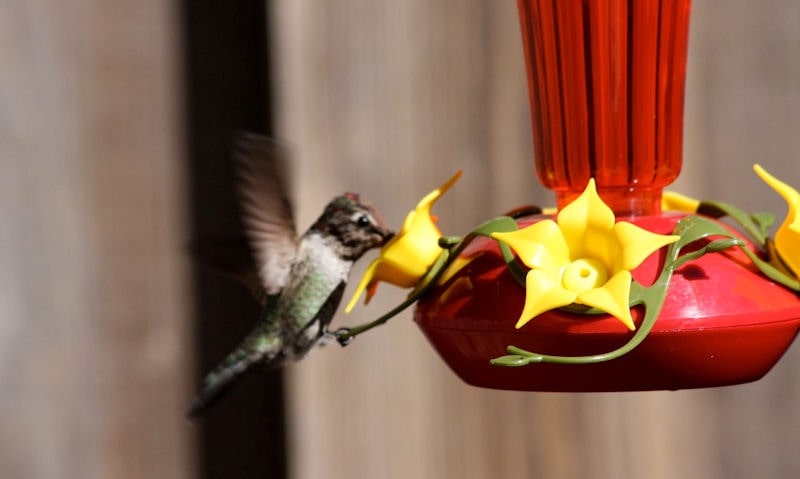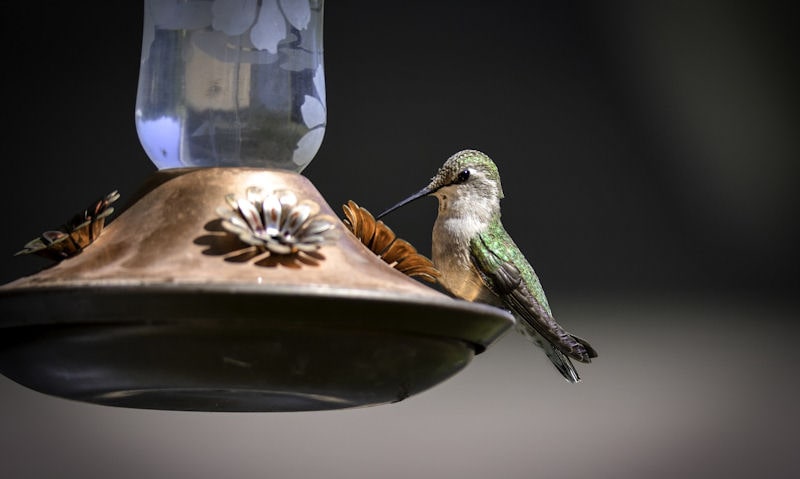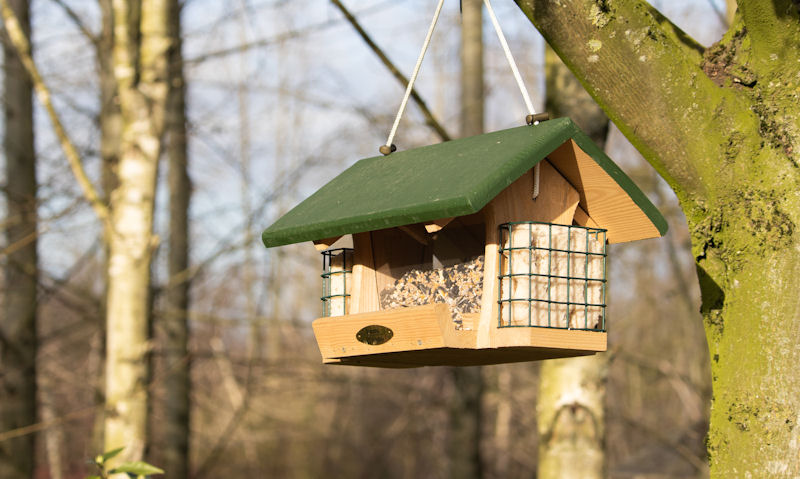How do Hummingbirds eat from feeders
Hummingbirds make it look easy, because it is, all it takes for Hummingbirds to access nectar trapped within a feeder is by sipping on the nectar at the port wells.
How Hummingbirds eat from feeders is with use of their remarkably designed long bill, with a combination of their tongue that protrudes out to reach a nectar source, available in a nectar flower pocket, or within a feeder. Hummingbirds sip nectar so precisely, its rare to see little waste of nectar.
How Hummingbirds go about accessing fresh nectar in flowers, or what is homemade or store-bought nectar for feeders, is an incredible sight when looked up close.
What is a long, flexible, soft-edge and spoon shaped bill, Hummingbirds can poke their bill into a tight spot without risk of damaging or breaking their bills - as the flexibility provides some bend when being too aggressive - which is commonplace when Hummingbirds are seen to fight for what they perceive as a scarce food source.
In some parts of the country, Hummingbirds are found to make the most of this remarkable bill, as a tool more for fighting, rather than sipping on nectar.
As you can imagine, their bills are tough, multiple-use devices and a weapon used to survive in nature.
Well, its their bill how Hummingbirds eat from feeders - and with no trouble at all I might add - as manufacturer's of Hummingbird feeders provide basic, accessible port wells where Hummingbirds can dip their bills in to sip on the nectar with ease.
Knowing Hummingbirds rely on their bills, along with an exposed tongue to sip on the nectar buried not all that deep within a feeder; do keep feeders clean while also changing out the Hummingbird feeder several times a month, to avoid bacteria developing internally.
Benefits of Hummingbird feeders is how you can take it apart to clean it properly, which is what you must focus on in order to avoid poisoning wild life.
Movement of the Hummingbird feeder seems to not effect the ability of Hummingbirds who perch; yet those who choose to hover at the port wells will find it hard to precisely poke their bills in to what is a moving feeder.
Hummingbirds sip nectar
Hummingbirds have a remarkable long, thin bill that is so well developed, it can slip inside the wells of nectar-filled flowers to sip on the fresh nectar.
And that is how Hummingbirds eat from Hummingbird feeders, they will poke their long bills in to the feeder to sip on the nectar.
Hummingbird feeders imitate life, thus the port wells are where Hummingbirds will access the hopefully, clean, germ-free homemade nectar.
With their ability to sip on vast amounts of nectar available within a feeder - and with help of their long tongues - Hummers will have no difficulty sipping on nectar when, or if its available at nectar-filled feeders.
Be sure the Hummers have a corresponding Hummingbird feeder available, as some people provide an Oriole feeder to feed all. In fact, nectar Oriole feeders aren't compatible with much smaller Hummers, thus they can end up going without.
How Hummingbirds eat from feeders is with a combination of their long bills and tongues, because when used together, the nectar in flowers or feeders can be accessed.
Tongue pokes out
Together with their availability to sip on nectar provided in their Hummingbird feeders, the Hummingbirds tongue also plays a vitally important role in accessing nectar- both in flowers or nectar-filled feeders.
Hummingbirds will hover or perch on a nectar-flower or feeder, and when they do their tongues will protrude out of their bills. Admittedly, it isn't pleasant to look at for most, including me, but it is needed in order to sip the nectar up in to their bills.
With their tongues in contact with the nectar, and as a taster to know they found a nectar source, the Hummingbird will begin to sip.
Tongues out, nectar runs up this long thin tongue to provide a drip-free way of eating nectar, without getting this sugary mix on themselves. Although there's no guarantee of a drip-free Hummingbird feeder, which will need resolving if signs of leaks emerge.
Drops of nectar can appear on the end of the bill, but its usually eaten rather than seen dripping.
Hummingbird feeder port well access points will provide more depth when its less full of homemade nectar, yet it won't be shallow enough Hummingbirds are unable to reach it with their tongue.
Keep it safe around where Hummingbirds poke their tongues in to, in what can be a bacteria riddled port well that must be taken into consideration. You must be sure to keep port wells clean to avoid passing on germs to the exposed tongues of the Hummingbirds.
Know wells are nectar source
Don't worry about it, if you have an available Hummingbird feeder or two suspended in your yard, its safe to say Hummingbirds will probably know you have a feeder - whether its regularly used or appears to be forever ignored.
When Hummingbirds finally do come to your Hummingbird feeder, which you must have been patient enough, watch as they soon move directly to the open port wells.
Hummingbirds have spent plenty of time around feeders made available to them - both in the United States or Mexico - so will know how to use a feeder.
And with that, Hummingbirds absolutely know how to eat from a feeder with no trouble.
Hummingbird feeders are really recommended to attract Hummingbirds to your yard, and knowing where they will eat, its important to keep the feeder accessible, visible, and topped up with clean, fresh homemade nectar.
Hummingbirds will spend their time perched or hovering at all types of Hummingbird feeders, with most providing reliable port well access points.
Conclusion
Really not much to it really, Hummingbirds will come to any port well on the feeder, to poke their bills into an opening, to sip on the nectar sitting inside these holes.
How Hummingbirds eat from feeders is with a combination of their long bills and tongues, with then the simple technique of sipping on the nectar to reached within long nectar flowers in the wild - or when nectar is available in feeders.
Hummingbirds have a remarkably designed bill, that is able to poke deep inside flowers to tap a nectar well.
Hummingbird feeders are made easy for Hummingbirds to sip on the nectar as they poke their bills in one of many port wells.
Only when the nectar inside the Hummingbird feeders begins to run low - due to use or if it naturally dries up - will their long bills, together with their tongues, provide additional length, allowing Hummingbirds to access nectar that would otherwise be out of reach.
For me, an Hummingbirds tongue poking out to sip on nectar isn't all that beautiful, but you have to appreciate the amazing ability of their bill/tongue combination.


